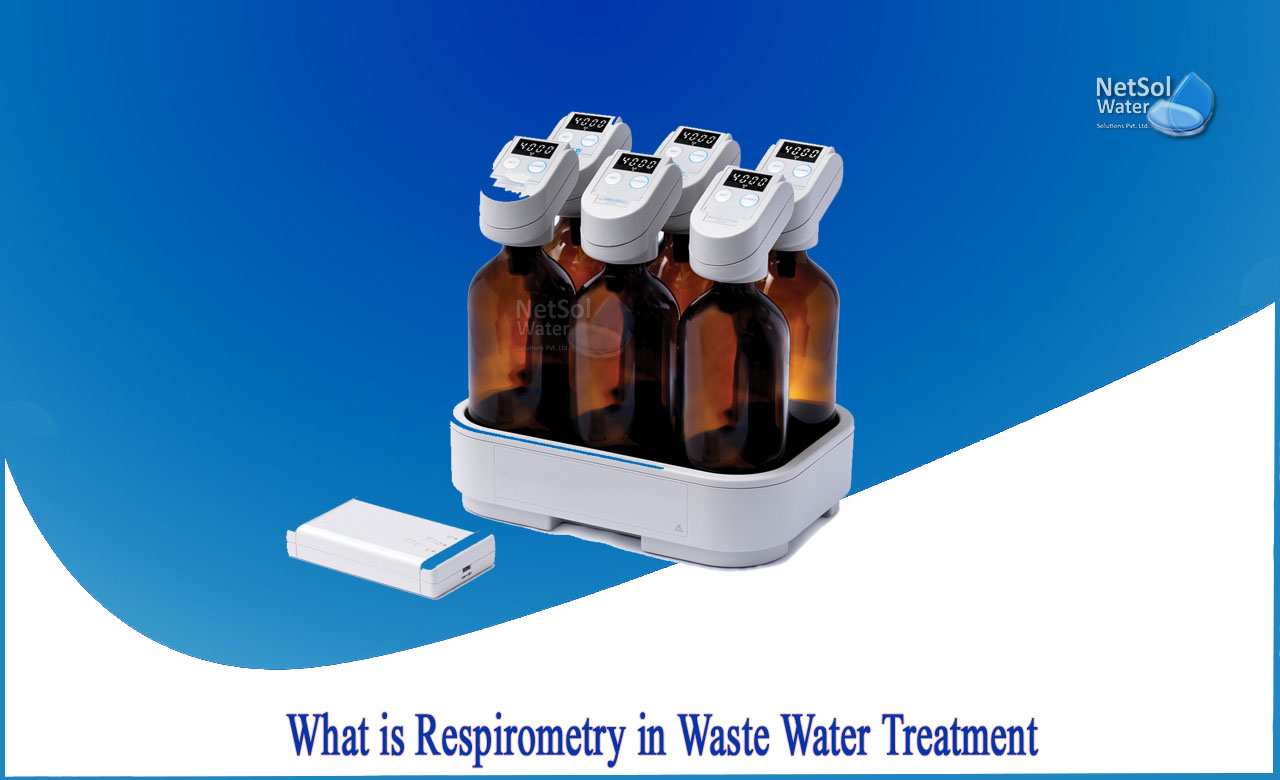What is respirometry in waste water treatment?
Wastewater treatment plants are facing growing pressure to improve their operational efficiency. In this case, there are two goals.
The first is to lower the treatment costs.
The second is a reaction to new legislation aimed at decreasing harmful material carryover into receiving waters.
To do this, attention must be paid to the critical role of bacterial respiration in the aerobic therapy process. The importance of respiration in this context stems from the fact that it can be measured fast and simply. Respiration measurements can be used to predict the treatment process, regulate toxicity, and quantify short-term BOD, nitrification capacity, quickly degradable BOD treatment capacity, and aeration requirements using new technologically enhanced respirometers. More effective process control and the implementation of toxicity management strategies for plants that treat industrial wastes are the most likely sources of significant efficiency gains.
What do you mean by respirometry?
Respirometry is a broad term that refers to a variety of approaches for estimating metabolic rates in vertebrates, invertebrates, plants, tissues, cells, and microbes by measuring aerobic or anaerobic respiration.
When analysing wastewater treatment systems and programmes, respirometry is a useful instrument.
Respirometry is used in wastewater microbiology to detect the activity of bacteria by measuring oxygen consumption in aerobic processes or gas production in anaerobic processes directly or indirectly. Monitoring bacterial respiration can offer an indirect evaluation of BOD clearance rate and quantity because it is linked to the consumption of organics (BOD). They can also be used to measure wastewater treatment kinetics, such as oxygen and organic utilisation rates.
Application of respirometry in sewage treatment plants
Respirometry can detect the oxidative processes of respiration and nitrification that underpin the breakdown and removal of organic carbon and ammonia. Oxygen uptake rates can be utilised in process control to mimic the aerobic treatment process and manage toxicity. In addition, respirometry is utilised to anticipate BOD treatment capacity, aeration requirements, and nitrification capacity in the short term. Aeration tanks that are totally mixed and a secondary settlement tank make up the treatment facility.
The poisonous chemical, which is tested at two different concentrations, is non-biodegradable and inhibits respiration. There would be a 50% reduction in respiration rate if the toxin content was lower, resulting in 3-4 times rise in effluent COD. The respiration rate would be hindered by 80% if the toxin content was increased threefold, resulting in a 150 percent rise in effluent COD. This might be used to model other reasons of variations in the activated sludge's respiration rate, and it has a lot of potential for better process control.
Maximum respiration rate measurements in the lab will immediately determine the maximum rate of readily degradable BOD breakdown possible with the biomass in the tanks at any given time. Increased loading can overwhelm the biomass's ability to absorb it within the limited retention time. As a result, prior knowledge of BOD biodegradation rates with the biomass available can be used to enhance process control.
Other uses of respirometry in waste water management
The maximum respiration rate of activated sludge has been measured for monitoring and process control purposes, including determining maximum aeration capacity and estimating biomass viability and concentration. However, it has been suggested that using the endogenous rate of respiration rather than the maximal rate of respiration yields a more accurate estimate of biomass concentration. New instrumentation will make it possible to measure the nitrification capacity of activated sludge quickly. Finally, respiration rate measurements can be utilised as the foundation of a toxicity control plan for treatment plants that take industrial effluents. When adopted, this could provide immediate benefits in terms of increasing the efficiency of aerobic treatment plants.
For more information, contact Netsol Water.
Netsol Water is Greater Noida-based leading water & wastewater treatment plant manufacturer. We are industry's most demanding company based on client review and work quality. We are known as best commercial RO plant manufacturers, industrial RO plant manufacturer, sewage treatment plant manufacturer, Water Softener Plant Manufacturers and effluent treatment plant manufacturers. Apart from this 24x7 customer support is our USP. Call on +91-9650608473, or write us at enquiry@netsolwater.com for any support, inquiry or product-purchase related query.



